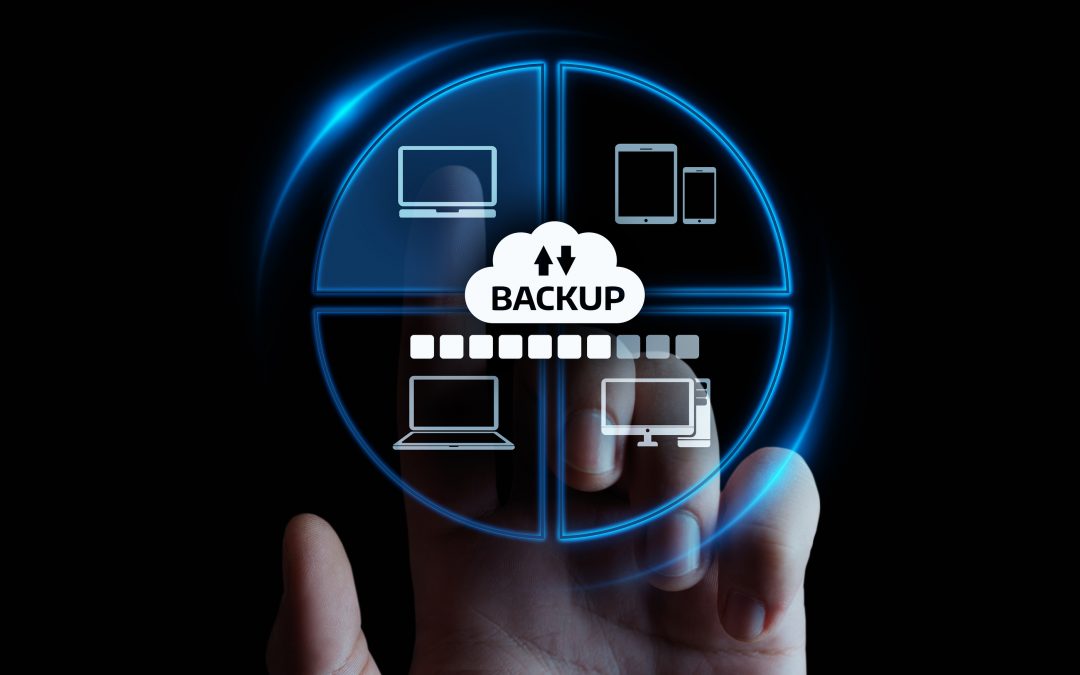Backing up data is one of those basics of best business practices. Backups help ensure that your business won’t suffer from devastating downtime or losses due to potential events that could cause you to lose important files needed to run your business. There are many types of events that can cause unexpected data loss for a company. These include things like:
- Ransomware attack
- Computer virus
- A natural or manmade disaster
- Accidental deletion or overwriting
- Malicious deletion and theft
- Hard drive crash
- System malfunction
- Cloud provider outage or system failure
- A lost or stolen device
The whole purpose of backing up is to have the ability to restore that data in full if needed. But this is the part of the backup and recovery process where many businesses stumble. 74% of surveyed businesses said they have experienced data loss within the last five years and 52% of them could not recover all their data after a data loss incident. That’s over half of companies having issues with data recovery. Often the problem is that companies are backing up incorrectly and not incorporating two vital pieces into their strategy – these are, recovery point objective (RPO) and recovery time objective (RTO). No matter what size business you have, your backup and recovery plan is incomplete without these guiding it.
How to Use Recovery Point Objective (RPO)
A company’s RPO is the point in time that they want the ability to recover their data should it be lost. One business might have an RPO of 1-hour (meaning they back up all data each hour), while another might have a 24-hour RPO (which indicates a backup once per day). A factor to consider when setting RPO is the length of time you retain backup copies of your data. Most companies will keep more than the last backup because data loss or a virus may be discovered days after it has happened. This means they would want to use a backup that is several days old, rather than the latest one. You can think of RPO as how much data you are willing to lose. The initial thought here is, “None.” But this would mean that you would backup every minute that data was collected and generated, which could lead to costly backup storage. Look at how much data is generated or captured by your company in a typical day and hour. Then factor in the length of time you want to keep your backups and how often you need to have all devices backed up. It’s important to set your RPO so your backups can be set at the proper increments to support it.
How to Use Recovery Time Objective (RTO)
RTO is how fast you can recover after a crisis and data loss incident. This must be both a realistic and tested metric. Otherwise, it can easily leave you in trouble and at the mercy of ransomware attackers. Recent examples of companies getting RTO wrong or not having one to begin with are the ransomware attacks on Colonial Pipeline in the U.S. and the largest global producer of beef and pork, JBS. Both companies were attacked by ransomware in separate incidents in 2021. Both opted to pay the attackers millions in ransom because they weren’t confident of how fast their own backups could be restored and thought paying the ransom would restore operations faster. 23% of businesses never test their data recovery plans. You’ll want to discuss your recovery time objective with your Singapore IT provider and come up with the shortest time to restore data as possible and then test that in disaster recovery drills regularly to ensure you can meet it. Testing your recovery process regularly helps you train your team on the steps that need to be taken if a crisis occurs. It also helps you reduce your RTO because people and processes become more efficient the more they are practiced.
Fast & Complete Data Recovery Tips
Here are a few tips for helping to reduce the time it takes you to recover data and to ensure all your data can be restored:
Make Sure All Data is Being Backed Up
When putting a backup and recovery system in place, make sure it’s capturing data stored in cloud applications (like Microsoft 365), work mobile devices, and remote team devices.
Use a Managed Backup Provider
There are a lot of things that can cause backup software to stall or malfunction. The best bet to ensure complete data capture is to have backups monitored through a managed backup provider.
Test Backup & Recovery According to a Schedule
Put the testing of your backup and disaster recovery procedures on a regular schedule, so it doesn’t fall by the wayside and never get done. Consider doing it quarterly to ensure procedures are retained by employees.
Get Peace of Mind with Managed Backup & Recovery
Managed IT Asia can help your Singapore business ensure a smooth and fast data recovery through managed backup services. Contact us today to schedule your free consultation. Call +65 6748 8776 or reach us online.
MANAGED IT ASIA, we are an IT Support, IT Solutioning and Managed IT Service Provider specializing in serving Small Businesses across Asia. Call us at +65 6748 8776 and let us manage your Small Business IT today!
